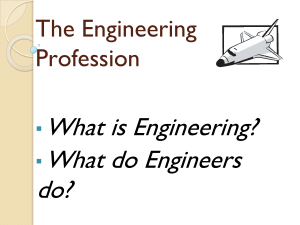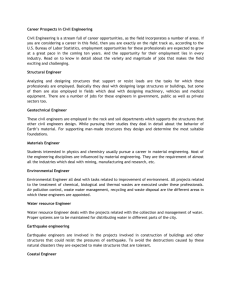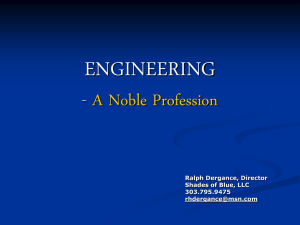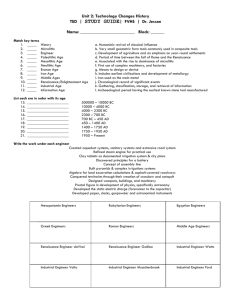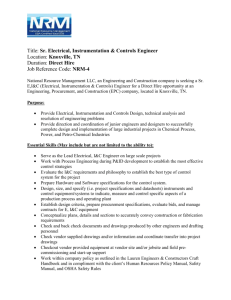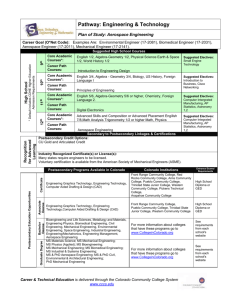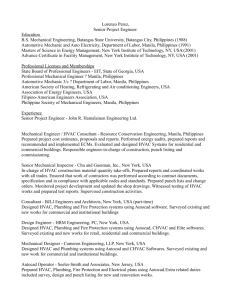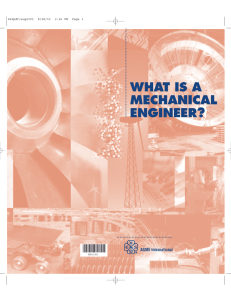Lesson Plan - Autodesk Design Academy
advertisement
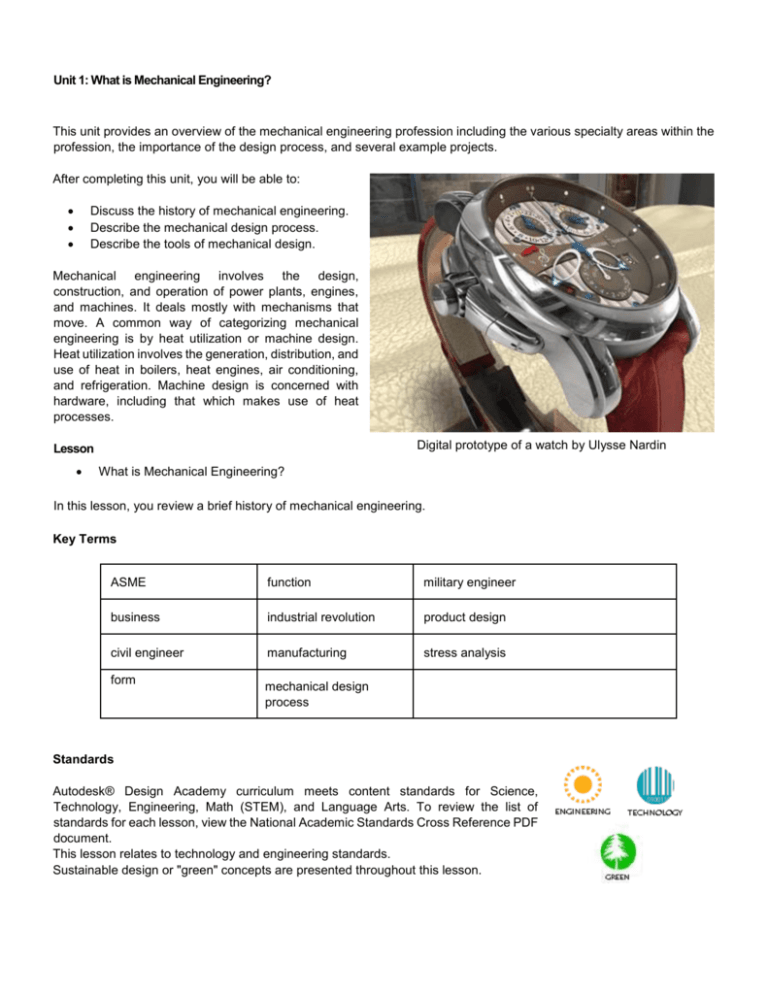
Unit 1: What is Mechanical Engineering? This unit provides an overview of the mechanical engineering profession including the various specialty areas within the profession, the importance of the design process, and several example projects. After completing this unit, you will be able to: Discuss the history of mechanical engineering. Describe the mechanical design process. Describe the tools of mechanical design. Mechanical engineering involves the design, construction, and operation of power plants, engines, and machines. It deals mostly with mechanisms that move. A common way of categorizing mechanical engineering is by heat utilization or machine design. Heat utilization involves the generation, distribution, and use of heat in boilers, heat engines, air conditioning, and refrigeration. Machine design is concerned with hardware, including that which makes use of heat processes. Digital prototype of a watch by Ulysse Nardin Lesson What is Mechanical Engineering? In this lesson, you review a brief history of mechanical engineering. Key Terms ASME function military engineer business industrial revolution product design civil engineer manufacturing stress analysis form mechanical design process Standards Autodesk® Design Academy curriculum meets content standards for Science, Technology, Engineering, Math (STEM), and Language Arts. To review the list of standards for each lesson, view the National Academic Standards Cross Reference PDF document. This lesson relates to technology and engineering standards. Sustainable design or "green" concepts are presented throughout this lesson. 1. 2. 3. 4. Lesson Plan Review the history of mechanical engineering. (Discussion) Present a brief history of the profession. (Teacher) Discuss the variety of specialties and types of projects within the profession. (Teacher) Discuss the mechancial design process. (Discussion) The History of Mechanical Engineering The Industrial Revolution originally referred to developments between 1750 and 1830 that transformed Great Britain from a largely rural population that made a living almost entirely from agriculture to a town-centered society increasingly engaged in factory manufacture. Before the Industrial Revolution, there were only two kinds of engineers, the military engineer and the civil engineer. The military engineer built such things as fortifications, catapults, and, later, cannons. The civil engineer built bridges, harbors, aqueducts, buildings, and other structures. In early nineteenth-century England, mechanical engineering developed as a separate field to provide manufacturing machines and the engines to power them. The first British professional society of civil engineers was formed in 1818; a society for mechanical engineers formed in 1847. In the United States, the order of growth of the different branches of engineering, measured by the date a professional society was formed, is civil engineering (1852), mining and metallurgical engineering (1871), mechanical engineering (1880), electrical engineering (1884), and chemical engineering (1908). Aeronautical engineering, industrial engineering, and genetic engineering are more modern developments. Founded in 1880, the American Society of Mechanical Engineers (ASME) is today a 127,000-member professional organization focused on the technical, educational, and research issues of the engineering and technology community. Visit the following website to review the activities and publications of the American Society of Mechanical Engineers (ASME) http://www.asme.org. The Mechanical Design Process Typically, the design process focuses on three areas: product design, business, and manufacturing. These three areas take into consideration topics such as the form and function of a design, the needs of the target market, and the ability to manufacture the product in a cost-efficient way. Companies such as Boothroyd Dewhurst have software to systematically analyze product designs with the goal of reducing manufacture and assembly costs, improving quality and speeding time to market. This process is known as Design for Manufacturing and Assembly (DFMA). Go to http:// www.dfma.com/ to review their activities and publications. The Tools of Mechanical Design Through the years, engineers have advanced from using simple measuring tools and calculating devices to computer-aided design (CAD) performed on powerful computers. Autodesk® provides a good example of a company that revolutionized the software industry with the AutoCAD® product, which introduced drafting on a PC. The widespread popularity of AutoCAD software introduced engineers worldwide to the capabilities of CAD. For example, TBS Design in Portland, Oregon designed the oil module shown in the following image using AutoCAD software. CAD Software and the Design Process The use of 2D and 3D design tools enhances the design process. In addition to using AutoCAD software, designers can create 3D solid models and analyze their designs using Autodesk Inventor software. This provides the designer with the tools to go from concept and design to production more quickly. For example, J.S. McNamara, a leading design and engineering supplier to the automotive industry, created the overall design for the assembly machinery project for the Hummer H2 and turned the designs over to its partner Lamb Technicon to build and install the designs. To review a video presentation of this project, visit the following websitehttp://www.autodesk.com/hummerthe following website http://inventordesigngallery.autodesk.com. For a comprehensive review of design, visit. Click Consumer Products. Analyzing a Design The design process involves the testing or creation of prototypes. Using stress analysis, designers can use the existing 3D data to test and modify a design. In the image shown, a designer is analyzing the vibration in a design. Based on the results, the part can be modified and reanalyzed without the cost of creating a prototype.


